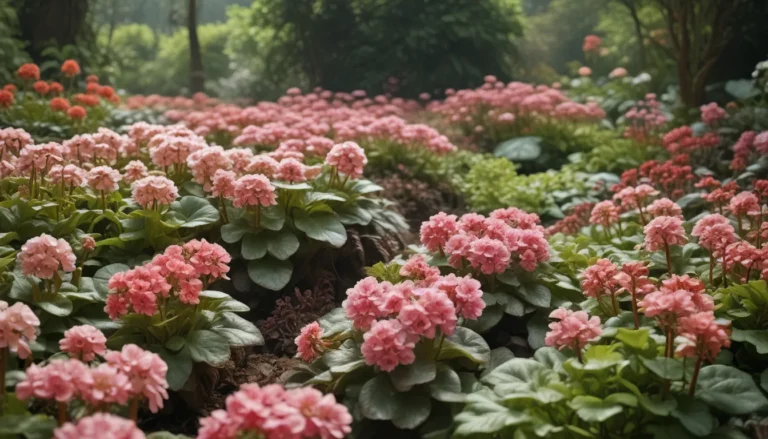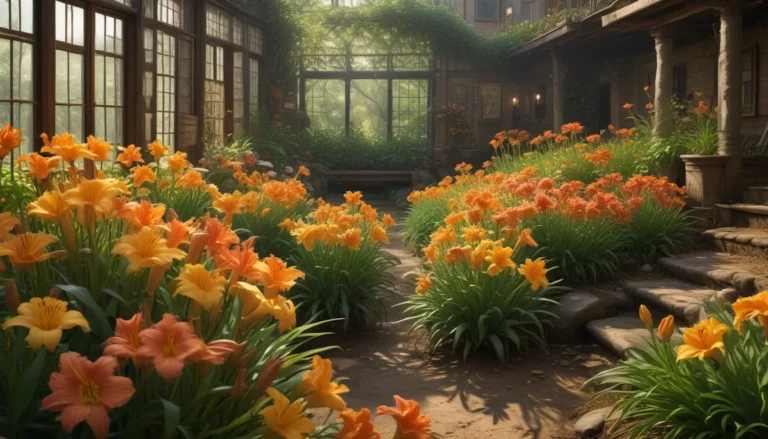How to Successfully Cultivate Rex Begonias Indoors

If you’re looking to add a touch of living art to your indoor space, rex begonias are a perfect choice. These mesmerizing houseplants are known for their rich colors, dramatic patterns, and vibrant leaves that can lift your spirits and challenge your perceptions of botanical beauty.
In this comprehensive guide, I’ll share valuable insights on how to grow and care for rex begonias indoors. From their cultivation and history to propagation, growing tips, and pruning, I’ll cover everything you need to know to ensure these stunning plants thrive in your home.
So, let’s dive into the fascinating world of rex begonias and discover the secrets to growing these botanical gems successfully.
What Are Rex Begonias?
Rex begonias, scientifically known as Begonia x rex-cultorum, are herbaceous hybrids that are primarily grown indoors. These hardy perennials thrive outdoors year-round in USDA Hardiness Zones 10 to 12 but are most commonly cultivated as houseplants in other regions.
One of the main attractions of rex begonias is their showy leaves, while their tiny blooms are considered insignificant. These plants are unique among rhizomatous begonias due to their showier foliage and elevated care requirements.
Rex begonias feature dense, rounded, or teardrop-shaped leaves that can grow up to three to six inches long or wide, depending on the variety. With metallic surfaces, matte finishes, and a wide range of colors and patterns, rex begonias offer endless possibilities for indoor gardening enthusiasts.
To keep your beloved rex begonias healthy and thriving, it’s essential to be aware that these plants contain insoluble calcium oxalate, which can be toxic to pets. By ensuring these plants are kept out of reach of pets and children, you can enjoy their beauty without any concerns.
Cultivation and History of Rex Begonias
Begonias belong to the Begonia genus, first described by botanist Charles Plumier in 1700. While Begonia rex is native to Assam, hybrids like Begonia x rex-cultorum emerged from crossbreeding efforts that began in the 20th century.
The captivating foliage of rex begonias caught the eye of horticulturists like Jean Linden, leading to the commercial introduction of these hybrids in the mid-19th century. Over the years, breeding efforts have resulted in a vast array of rex begonia cultivars with unique colors, patterns, and shapes.
From towering hybrids to varieties with velvety surfaces and spiral patterns, the world of rex begonias is filled with diversity and beauty. Today, you can explore a wide range of cultivars that cater to different preferences and design aesthetics.
Propagating Rex Begonias
When it comes to propagating rex begonias, there are several methods to choose from. While growing from seed is challenging due to the plants’ hybrid nature and tiny seed size, propagation from rhizomes and leaf cuttings is more feasible and rewarding.
If you’re looking to expand your rex begonia collection, consider propagating through the following methods:
From Rhizomes:
- Slice a leafless piece from the end of a rhizome with a clean paring knife.
- Allow the cutting to dry for a few hours before placing it on pre-moistened potting mix.
- Keep the cutting in a humid, well-lit spot until new roots and leaves emerge within a few weeks.
From Leaf Cuttings:
- Snip off a leaf from a mature plant and make small cuts on the underside.
- Pin the leaf onto moist soil and keep it in a warm, humid location.
- Transplant the emerging plants into individual pots once they reach a suitable size.
Whether you choose to propagate rex begonias from rhizomes or leaf cuttings, ensure that you provide the right conditions for successful growth and development.
How to Grow Rex Begonias Successfully
Growing rex begonias indoors requires attention to detail and care to create an optimal environment for these unique plants. By focusing on essential factors like soil, containers, light, temperature, humidity, water, and fertilization, you can support the healthy growth of your rex begonias.
Soil:
Use a porous, peat-based indoor growing mix that drains well to provide a suitable environment for rex begonias.
Containers:
Select shallow, wide containers with drainage holes to allow the rhizomes to spread and prevent root rot.
Light:
Provide bright, indirect light for rex begonias, avoiding direct sunlight to prevent leaf damage.
Temperature:
Maintain temperatures around 70°F during the day and 60°F at night to promote optimal growth.
Humidity:
Keep humidity levels above 50% to prevent leaf damage and ensure healthy growth.
Water:
Water rex begonias consistently, allowing the top inch of soil to dry out between waterings to prevent root rot.
Fertilizing:
Apply a balanced liquid fertilizer monthly during the growing season and cease fertilization during dormancy.
By following these essential guidelines, you can create a conducive environment for rex begonias to thrive and display their vibrant foliage year-round.
Pruning and Maintenance Tips for Rex Begonias
To maintain healthy and colorful rex begonias, regular pruning and maintenance are essential. Remove any dead leaves promptly, repot plants when needed, and address any pest or disease issues promptly.
Whether you’re growing rex begonias indoors or outdoors, ensuring proper care and maintenance will contribute to the long-term health and beauty of your plants.
Cultivar Selection for Rex Begonias
With a vast array of rex begonia cultivars available, selecting the right varieties can be overwhelming. While some cultivars offer trademark colors and patterns, others are unnamed but equally stunning options for indoor gardening enthusiasts.
Consider starting with cultivars like ‘Fire Woman,’ ‘Venetian Red,’ ‘Jurassic Megalo Croc,’ and ‘Jurassic Jr. Arctic Twist’ to explore different colors, textures, and shapes in the rex begonia world. These cultivars offer unique characteristics that can add vibrancy and visual interest to your indoor space.
Whether you choose named cultivars or opt for grower’s choice bundles, rex begonias are sure to bring joy and beauty to your home throughout the year.
Managing Pests and Diseases in Rex Begonias
While rex begonias are relatively low-maintenance plants, they are susceptible to common pests like mealybugs and spider mites, as well as diseases like leaf spots and powdery mildew. By practicing good hygiene, providing proper care, and monitoring your plants regularly, you can prevent and manage these issues effectively.
From mealybug control to powdery mildew prevention, staying vigilant and proactive in addressing pest and disease concerns will help your rex begonias thrive and flourish.
Best Uses of Rex Begonias in Indoor Spaces
Rex begonias are versatile plants that can be used in various settings to enhance indoor decor and bring a touch of nature to your living space. Whether placed on windowsills, in hanging baskets, or alongside other houseplants, rex begonias add color, texture, and personality to any room.
Consider incorporating rex begonias into your bathroom decor, pairing them with humidity-loving plants like ferns and palms for a tropical oasis feel. Their vibrant foliage and unique patterns make them an excellent choice for creating visual interest and adding a pop of color to any indoor setting.
By exploring different placement options and companion plants, you can create stunning displays that showcase the beauty and elegance of rex begonias in your home environment.
In conclusion, rex begonias are exceptional houseplants that offer a delightful blend of beauty, color, and charm. By following the tips and guidelines shared in this comprehensive guide, you can successfully cultivate rex begonias indoors and enjoy their captivating foliage year-round.
To continue your journey into the wonderful world of begonias, check out our guides on wax begonias, tuberous begonias, and angel-wing begonias for more growing and care tips.
With the right care and attention, rex begonias can thrive and flourish in your indoor space, rewarding you with their unique beauty and enchanting presence. Share your favorite rex begonia varieties and experiences in the comments below, and let’s continue the conversation about these remarkable plants.





